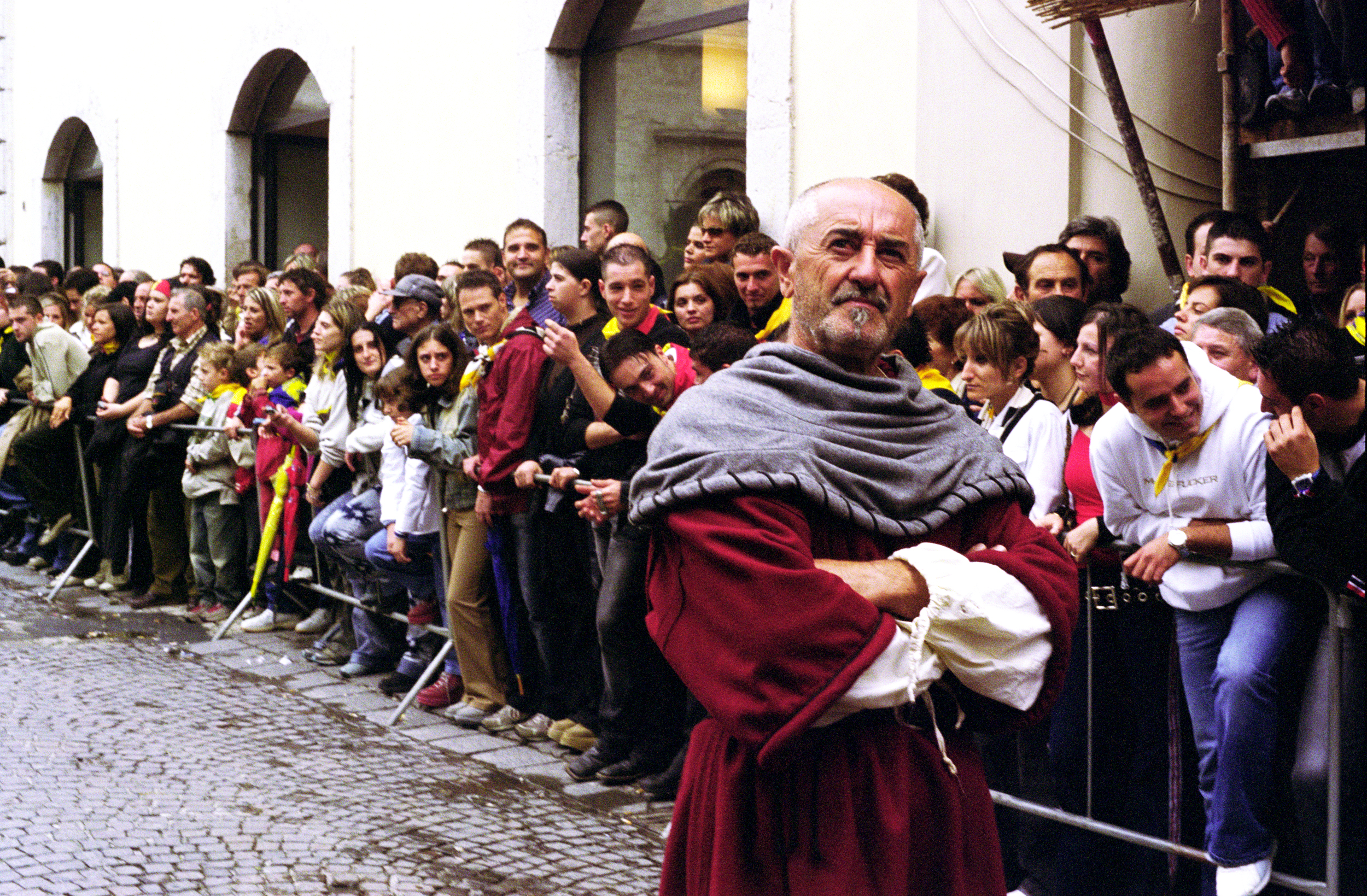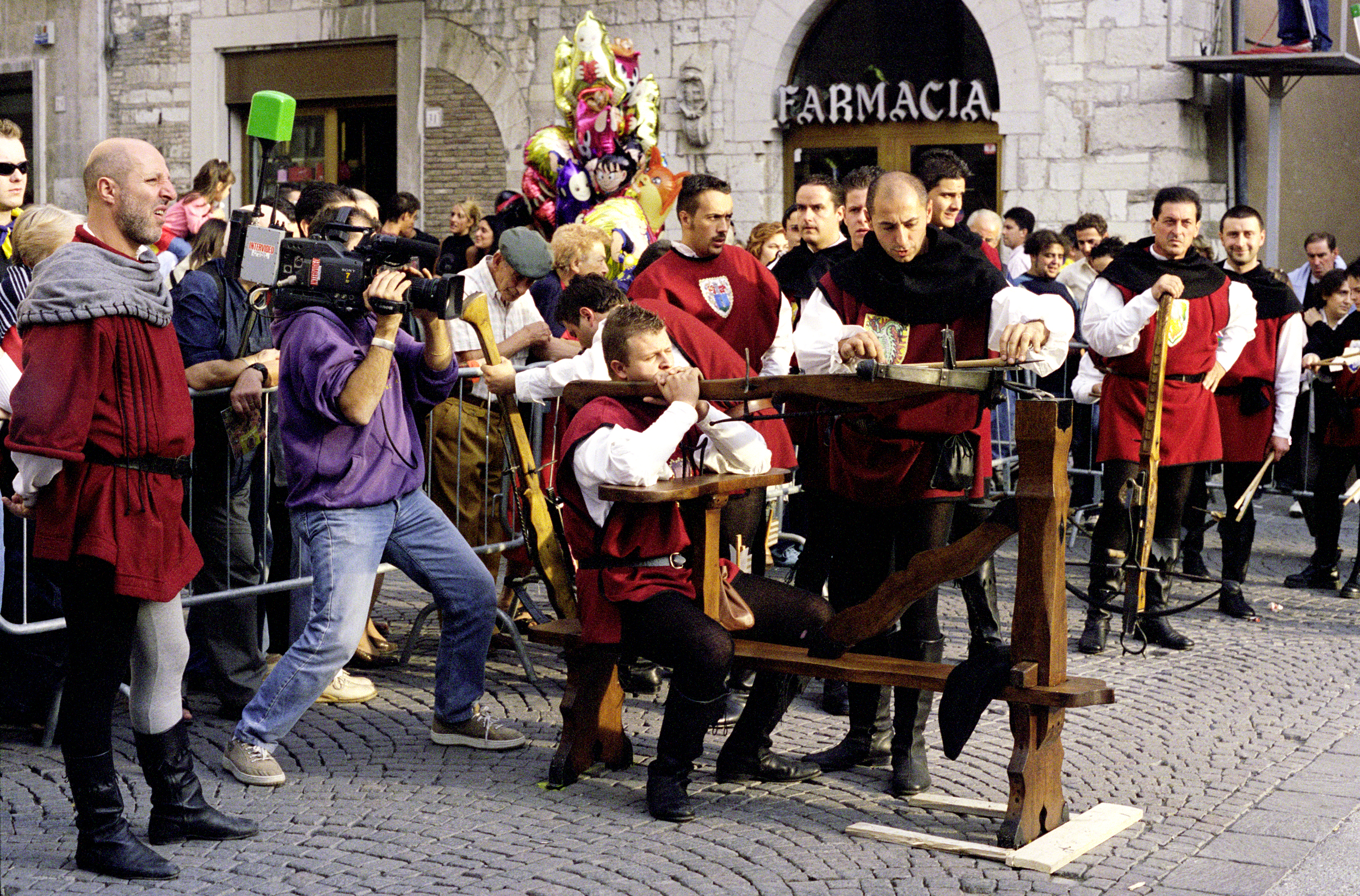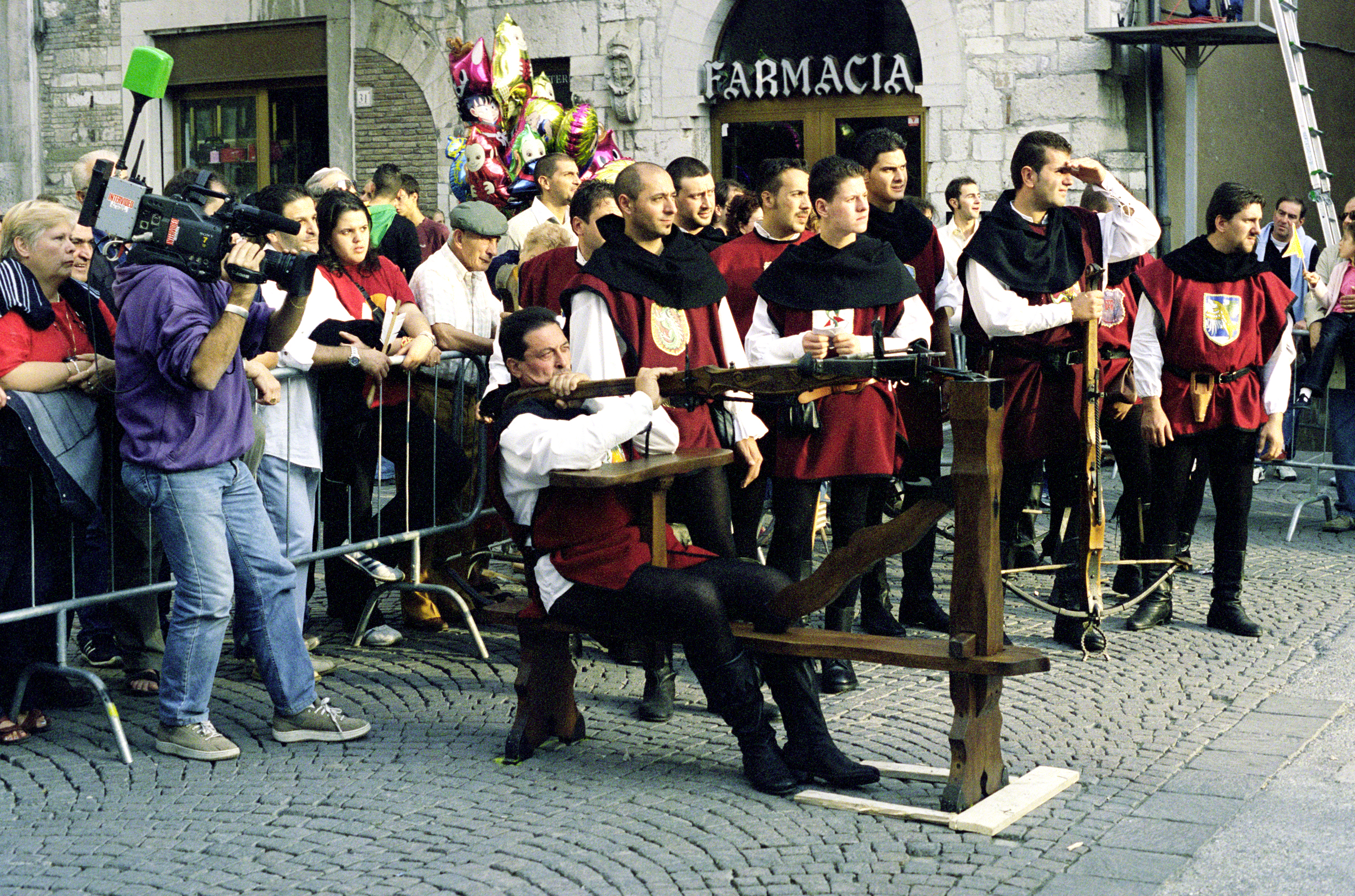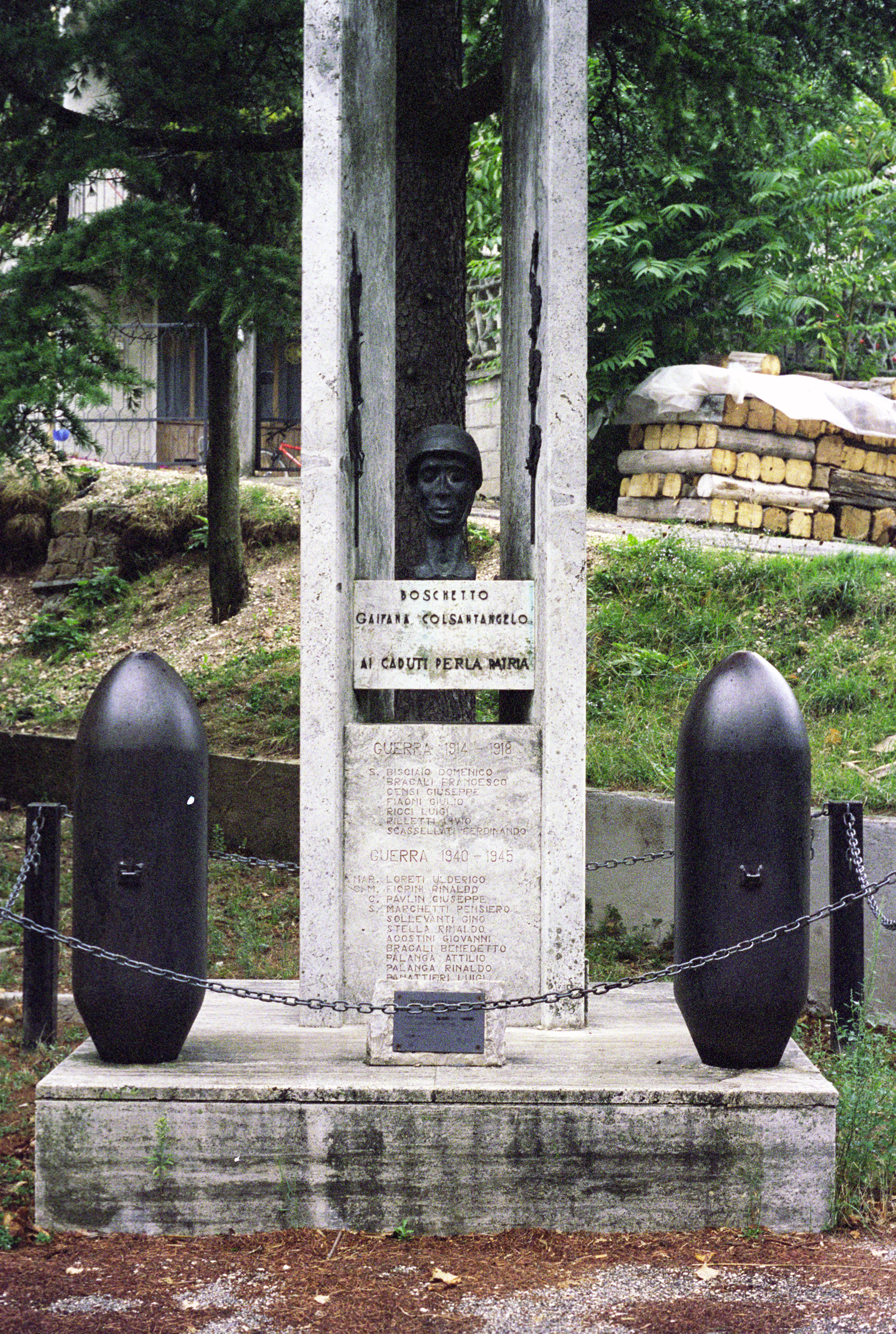On a quick trip to central Italy during the fall of 2003, we travelled to the Umbrian town of Gualdo Tadino (pop. @ 15,000). In the region of Umbria, Germanic influence was significant. The dual name for the town reflects this. “Gualdo” derives from the German “wald” for “forest.” “Tadino” refers to the old Roman town of “Tadinum.” From 996, the town was called “Gualdo.” Later, in 1833, Pope Gregory XVI re-added the Roman “Tadino” portion of the city’s name. Our Italian side’s family village, Gaifana, is just about 8km down the famous Roman Road, Via Flaminia, originally built in the 3rd century BCE, stretching from Rome to Rimini.
From the 6th until the mid-14th century, Gualdo Tadino existed as part of the Lombardic Duchy of Spoleto. The Lombards were a Germanic people who had invaded Italy in the late 6th century. In the mid-14th century, Umbria became part of the Papal States. For the next several hundred years, the population of Umbria waffled between loyalties to the Vatican or to the Holy Roman Empire before ultimately being annexed by the modern state of Italy in 1860. Today, along with other towns in Umbria, Gualdo Tadino is known for its ceramics.
Every fall, in a tradition started around 1970, the people of Gualdo Tadino host a three-day festival called “Giochi de le Porte” (or “the Games of the Gates”), dedicated to St. Michael the Archangel, pitting teams from neighborhoods of the four principal town gates against each other in medieval games — including a cart race, a donkey race, slingshot and archery competitions. Each team wears a different colored handkerchief to signify their gate. Day one starts with the “opening of the taverns” where the town inhabitants gather to eat and imbibe, and the traditional exchange of gifts between different teams. At the end of the races, the winning team has the honor of burning an effigy of Bastola, a reputed witch accused of destroying the town by fire in 1237.
The event is quite spectacular with what seems like the entire town turning out for each phase of the festival. It is certainly a part of Italy where a knowledge of Italian is essential.
Here are a few snaps of the festival taken with a 1968 Konica Autoreflex T on Kodak Portra film.





A poignant War Memorial in the family village of Gaifana
